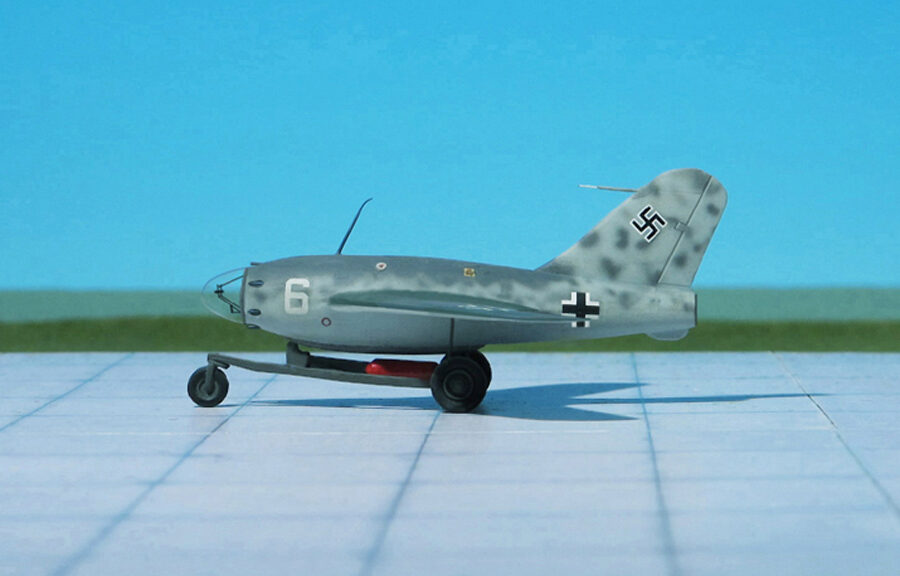TYPE: Interceptor, Project
ACCOMMODATION: Pilot, in prone position
POWER PLANT: One BMW 109-510 or one Walter HWK 109-509 liquid-fuel rocket engine, each rated between 300 and 1,500 kp thrust
PERFORMANCE: 550 mph (estimated)
COMMENT: This Lippisch Li P.01-117 project dates from July and August 1941 after Alexander Lippisch and his design team moved to the Messerschmitt A.G. in Augsburg in early 1939. At that time a trio of Lippisch Li P. 01 designs were conceptualized within three weeks – the P.01-117 on July 22, the P.01-118 on August 3 and the P.01-119 on August 4.
The first design P.01-117 featured a cockpit where the pilot laid on a couch, chin up and head forward, the second boasted a novel tilting seat arrangement to improve the pilot’s visibility during a steep near-vertical climb, and the third had a pressure cabin for high altitude operations. Each of them was to be powered by a BMW or Walter HWK rocket engine but only the P.01-118 also had a second rocket engine to provide greater endurance for level flight. From this point on, all mention of the P.01 ceased and the project continued as the Messerschmitt Me 263.
The Lippisch Li P.01-117 was a tailless aircraft, with a swept wing at approximately 35 degrees. The overall plan resembled the later Messerschmitt Me 163 “Komet” rocket-powered fighter. The fuselage held the fuel tanks and a rocket engine was mounted in the rear fuselage. A pressurized cockpit was located in the aircraft’s extreme nose, and the pilot faced the front in a prone position and looked out through a blister of bulletproof glass. Up to six MG 151/20 20mm cannon were mounted around the nose of this aircraft. Take-off was accomplished by means of a releasable trolley, sometimes additionally boosted by two solid fuelled Schmidding 109-563 take-off rockets with 500 kp thrust each. Additional jettisonable solid-fuelled rockets could be attached to the fuselage. Landing was to be accomplished on a retractable skid, as was later done on the Messerschmitt Me 163. This design went no further than the preliminary design phase, but the Messerschmitt Me 163 went into production and was used operationally by the Luftwaffe (Ref.: 20).












